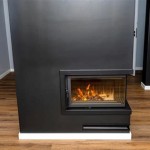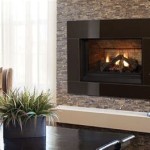Determining the Best Size TV to Put Over a Fireplace
Mounting a television above a fireplace is a common design choice, offering a centralized entertainment hub and maximizing space. However, selecting the appropriate television size for this location necessitates careful consideration of several factors to ensure optimal viewing comfort and aesthetic harmony. Ignoring these elements can lead to eye strain, neck pain, and an unbalanced room aesthetic.
The decision process involves assessing viewing distance, fireplace dimensions, television specifications, and personal preferences. It is a balance between visual enjoyment and ergonomic considerations. Improper sizing can lead to an overwhelming screen dominating the room or a screen that is too small to comfortably view from the seating area.
This article will delve into the key factors influencing the selection of the best-sized television for above-fireplace placement, providing guidance to help achieve a visually pleasing and ergonomically sound viewing experience.
Assessing Viewing Distance
Viewing distance is the primary determinant of optimal television size. The further away the viewer is seated, the larger the screen needs to be to maintain image clarity and immersion. A general rule of thumb suggests that the ideal viewing distance should be 1.5 to 2.5 times the diagonal screen size of the television. For example, if the viewer is seated 10 feet (120 inches) away from the fireplace, a television with a diagonal screen size of 48 to 80 inches might be suitable.
However, this is a simplified guideline. Individual visual acuity and screen resolution play a significant role. A higher resolution television (4K or 8K) allows for a closer viewing distance without pixelation becoming noticeable. Conversely, with lower resolution screens, a greater viewing distance is necessary to maintain image quality.
To accurately determine the viewing distance, measure the distance from the typical seating position to the wall above the fireplace where the television will be mounted. This measurement serves as the foundation for calculating the appropriate screen size. It's crucial to account for the reclined seating position, as the distance will appear slightly shorter while reclined.
Online calculators and charts are readily available that correlate viewing distance with recommended screen sizes. These tools often incorporate resolution into the calculation, providing a more nuanced recommendation. Consulting multiple sources and averaging the results can further refine the selection process.
Consider the viewing habits of all members of the household. If multiple individuals with varying visual needs will be watching television, it may be prudent to opt for a slightly larger screen to accommodate everyone’s preferences. Testing different screen sizes in a store or showroom can provide valuable insight and confirm the calculated recommendations.
Evaluating Fireplace Dimensions and Mounting Height
The dimensions of the fireplace itself and the intended mounting height of the television significantly impact the perceived size and overall aesthetic. A disproportionately large television mounted above a small fireplace can appear overwhelming and unbalanced, while a small television above a large fireplace may seem insignificant and lost.
Measure the width and height of the fireplace. The television's width should ideally be less than or equal to the width of the fireplace surround. This creates a visual harmony and prevents the television from appearing too dominant. The height of the fireplace mantle also influences the mounting height. A taller mantle will naturally raise the television, potentially leading to viewing discomfort if it’s placed too high.
Ergonomics dictate that the optimal viewing angle is at or slightly below eye level. When mounting a television above a fireplace, achieving this ideal angle can be challenging. Tilting television mounts are often employed to mitigate this issue, allowing the viewer to angle the screen downwards for improved viewing comfort. The degree of tilt required depends on the mounting height and the distance from the seating area.
Before finalizing the television size, physically mock up the intended placement using cardboard or painter’s tape. This provides a visual representation of how the television will look in relation to the fireplace and the surrounding room. Simulate the viewing experience by sitting in the typical seating position and observing the mock-up from various angles. This exercise helps assess whether the chosen size feels appropriate and comfortable.
Consider the potential for heat exposure from the fireplace. While modern televisions are designed to withstand moderate temperatures, excessive heat can damage sensitive components. Ensure that the television is mounted at a safe distance from the heat source and that adequate ventilation is provided. Heat shields and fireplace inserts can further protect the television from heat-related damage.
Considering Television Specifications and Features
Beyond screen size, television specifications and features play a crucial role in overall viewing experience. Resolution, refresh rate, HDR (High Dynamic Range) support, and viewing angles all influence image quality and visual comfort. Modern televisions offer increasingly advanced features that can enhance the viewing experience, particularly when mounted above a fireplace.
Resolution refers to the number of pixels on the screen. Higher resolution displays, such as 4K and 8K, provide sharper and more detailed images. This is particularly important for larger screens, as pixelation becomes more noticeable at closer viewing distances. A 4K television is generally recommended for screen sizes 55 inches and above, while an 8K television may be considered for screens 75 inches and above.
Refresh rate measures how many times per second the screen refreshes the image. A higher refresh rate results in smoother motion, reducing motion blur and improving the viewing experience, especially during fast-paced content such as sports or action movies. A refresh rate of 120Hz is generally preferred for larger screens and for viewers who are sensitive to motion blur.
HDR support enhances the contrast and color accuracy of the image, resulting in a more vibrant and realistic picture. HDR content is becoming increasingly prevalent, and a television with HDR support is highly recommended for optimal viewing quality. Different HDR formats exist, such as HDR10, Dolby Vision, and HLG. Dolby Vision is often considered the superior format due to its dynamic metadata, which adjusts the HDR settings on a scene-by-scene basis.
Viewing angles refer to the range of angles from which the screen can be viewed without significant degradation in image quality. This is particularly important when mounting a television above a fireplace, as viewers may be sitting at different angles relative to the screen. Televisions with IPS (In-Plane Switching) panels typically offer wider viewing angles than those with VA (Vertical Alignment) panels. However, VA panels generally provide better contrast ratios.
Smart TV features, such as streaming apps and voice control, are now standard on most televisions. These features provide convenient access to a wide range of content and can enhance the overall entertainment experience. Consider the operating system and app availability when selecting a smart television. User reviews and professional evaluations can provide valuable insight into the performance and reliability of different smart TV platforms.
The selection of appropriate audio is also important. The television's built-in speakers may not provide sufficient sound quality, especially in larger rooms. Consider adding a soundbar or surround sound system to enhance the audio experience. The placement of the speakers should be carefully considered to ensure optimal sound distribution.
Cable management is another key element. Wires and cables can detract from the aesthetic appeal of the setup. Conceal the cables within the wall or use cable management solutions to create a clean and organized appearance. Professional installation services can ensure that the television is securely mounted and that all cables are properly concealed.
Ambient lighting also plays a role in the viewing experience. Excessive ambient light can wash out the image and reduce contrast. Consider using blackout curtains or blinds to control the amount of light entering the room. Bias lighting, which is a soft light placed behind the television, can reduce eye strain and improve perceived contrast.
Ultimately, the best size television for above-fireplace placement is a subjective decision that depends on individual preferences and viewing habits. By carefully considering the factors outlined above, one can make an informed decision that results in a visually pleasing and ergonomically sound viewing experience. Consistent and accurate measurements combined with a realistic assessment of the space available will produce an optimized viewing experience.

Should A Fireplace Be Bigger Than The Tv Solved Tips

Matching Your Tv Size To Fireplace

Should A Fireplace Be Bigger Than The Tv Solved Tips

What Size Samsung Frame Tv Over Your Fireplace Chrissy Marie Blog

A Tv Over The Fireplace Design Yes Or Major No

Fireplaces Tvs 4 Things You Re Doing Wrong Stylish

Answering What Size Tv Should I Get And How High Do Hang It Chris Loves Julia Framed Fireplace Wall Above

Can I Mount My Tv Above The Fireplace

Matching Your Tv Size To Fireplace

ᑕ❶ᑐ What To Consider Before Mounting A Tv Above Fireplace
Related Posts








